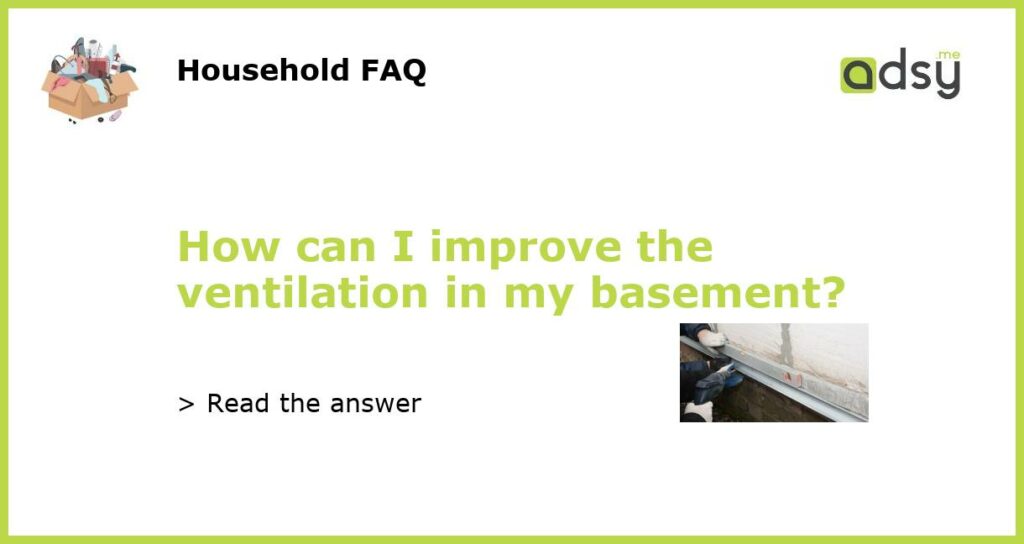Assess the current ventilation situation
The first step in improving the ventilation in your basement is to assess the current situation. Take a look at the existing windows, vents, and any fans that may be in place. Determine whether they are providing adequate airflow or if they need to be updated or supplemented.
Install or update basement windows
One of the most effective ways to improve ventilation in your basement is by installing or updating basement windows. Basement windows are designed to allow light and air into the space, helping to mitigate moisture and keep the air fresh.
If your basement already has windows, consider updating them with more energy-efficient options. Look for windows with double or triple glazing, weatherstripping, and low-emissivity coatings to maximize their performance. This can help prevent drafts, reduce noise, and improve insulation, all while still allowing for adequate airflow.
If your basement does not currently have windows, consider contacting a professional to discuss the possibility of adding them. Adding windows can be a more involved project, as it may require cutting through the foundation, but it can significantly improve the ventilation and overall livability of your basement.
Install basement vents
In addition to windows, another option to improve basement ventilation is installing basement vents. These vents work by allowing air to flow freely between the basement and the outside. They can be installed in the walls or floors of the basement and can be manually or automatically controlled.
There are various types of basement vents available, including passive vents that rely on natural airflow, as well as mechanical vents that use fans to actively circulate the air. Consider your specific needs and budget when choosing the type of vent that is right for your basement.
It is essential to ensure that the vents are properly installed and adequately sized for the space. Improperly sized or installed vents can lead to insufficient airflow or water ingress, so it may be worth consulting with a professional to ensure proper installation.
Use dehumidifiers and fans
Another way to improve ventilation in your basement is by using dehumidifiers and fans. Basements are often prone to excess moisture, which can lead to mold and mildew growth. Dehumidifiers can help remove excess moisture from the air, reducing humidity levels and preventing these issues.
Fans can also be beneficial in improving airflow and air circulation in the basement. Consider using portable fans or installing ceiling fans to ensure proper air movement. Fans can help distribute fresh air, alleviate stuffiness, and prevent stagnant air from forming.
When using dehumidifiers and fans, it is important to monitor their usage and ensure regular maintenance. Clean the filters regularly, empty the dehumidifier’s collection bucket, and ensure that fans are functioning correctly.
Keep the basement clean and organized
Lastly, keeping your basement clean, organized, and free from clutter can also contribute to better ventilation. Clutter can obstruct airflow and create pockets of stale air. Regularly clean and declutter the basement, removing any items or materials that may impede airflow.
Additionally, ensure proper ventilation in other areas of the house that may impact the basement. For example, if the basement shares a ventilation system with the upper floors, make sure that the ductwork is clean and adequately sized to allow for proper airflow.
By assessing the current ventilation situation, installing or updating basement windows and vents, using dehumidifiers and fans, and keeping the space clean and organized, you can significantly improve the ventilation in your basement. Remember to consult with professionals when necessary, and regularly monitor and maintain any systems or equipment that you install.

